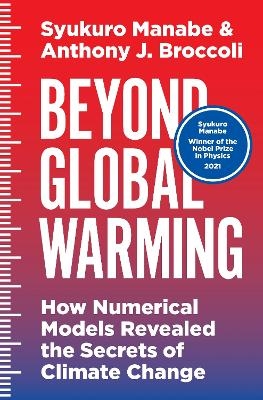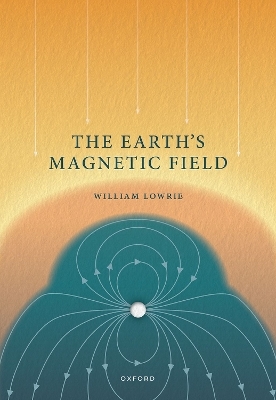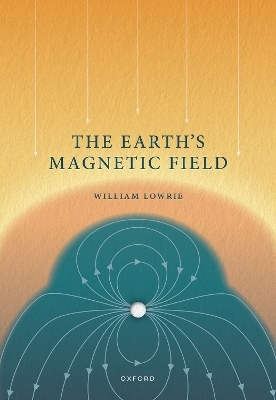
Hyperspectral Remote Sensing
Elsevier / The Lancet (Verlag)
978-0-08-102894-0 (ISBN)
Dr. Prem Chandra Pandey received PhD from the University of Leicester, United Kingdom, under Commonwealth Scholarship and Fellowship Plan. Currently, he is working as an assistant professor at the Department of Life Sciences, School of Natural Sciences, Shiv Nadar Institution of Eminence (Deemed to be University), UP, India. Previously, he has been associated with Banaras Hindu University, India, as an SERB-NPDF fellow. He received BSc and MSc degrees from Banaras Hindu University and MTech degree (Remote Sensing) from Birla Institute of Technology, India. He has worked as a professional research fellow on remote sensing applica tions in the National Urban Information System funded by NRSC Government of India. He has been a recipient of several awards including Commonwealth Fellow, United Kingdom, INSPIRE fellow GoI, MHRD-UGC fellow GoI, Malviya Gold Medal from Banaras Hindu University, SERB-NPDF from Government of India, and Young Investigator Award. Dr. Pandey is working in three projects related to monitoring of wetlands/Chilika lake mainly focusing on Ramsar sites along with other natural resources based research work funded by NGP and SERB Government of India. He has published more than 50 peer reviewed journal papers, seven edited books, several book chapters, and presented his work in national and international conferences. He is serving as a member of editorial board for Geocarto International journal, Taylor & Francis, Sustainable Development (Wiley- IF 12.5) and acted as a guest editor for Remote Sensing, Prashant K. Srivastava obtained his PhD from the Department of Civil Engineering at the University of Bristol in Bristol, UK, and currently serves on the faculty at the Institute of Environment and Sustainable Development at Banaras Hindu University in Varanasi, India. He formerly worked in the Hydrological Sciences Department at the NASA Goddard Space Flight Center and is currently an investigator for several national and international projects. He has published 100+ papers, many books, and several book chapters. He is also acting as an editorial board member of several reputed journals. Prof. Heiko Balzter received the Dipl.-Ing.Agr. (equivalent to M.Sc.) and the Dr.Agr. (Ph.D.) degrees from Justus-Liebig-University, Giessen, Germany, in 1994 and 1998, respectively. He is a Research Professor and the Director of the Centre for Landscape and Climate Research at the University of Leicester, Leicester, U.K and Official Development Assistance (ODA) Programme Leader in the NERC National Centre for Earth Observation. Before joining the University of Leicester, he was Head of the Section for Earth Observation at the Centre for Ecology and Hydrology, Monks Wood, U.K., where he worked from 1998 to 2006. His research interests include interactions of the water cycle with ecosystems across multiple spatial and temporal scales, pressures from climate change and land use change on ecosystem services, and the effects of spatial patterns and processes upon biological populations in evolving 3-D landscapes. Prof. Balzter holds the Royal Society Wolfson Research Merit Award (2011) and the Royal Geographical Society’s Cuthbert Peek Award ‘for advancing geographical knowledge of human impact through earth observation’ (2015). He received the President’s Cup for the Best Paper Annual Remote Sensing and Photogrammetry Society Conference (2009). Prof. Balzter chairs the BESS-EO working group on biodiversity, ecosystem services and Earth Observation, is a member of the NERC Future Landscapes Scoping Group, and UK representative on the Group on Earth Observations (GEO) Programme Board. He is leading the Copernicus Land Monitoring Service for the UK, which produces the CORINE land cover map. In the Forests 2020 project he is leading the Forest Cover Change Detection task. In GLOBBIOMASS, he is in charge of the regional case studies work package. He is Principal Investigator of the European Centre of Excellence in Earth Observation Research Training GIONET. Dr. Bimal Bhattacharya is associated with SAC ISRO Ahmedabad since 2000 as Scientist SG. He received his PhD degree (Agriculture Physics) in 1995 and MSc degree (Agriculture Physics) in 1991, from Indian Agricultural Research Institute, New Delhi. He served as a scientist in the Indian Council of Agricultural research (ICAR) from 1995 to 2000. He has been working in different scientific capacities at Space Applications Centre, ISRO, Ahmedabad, Gujarat since 2000. He is involved in developing satellite-based agro-met products and their utilization in National Agro-met Advisory Services in India. He led the development of satellite-based surface energy balance modeling over Indian terrestrial ecosystems especially with remote sensing data from a suite (INSAT VHRR, 3A CCD, 3D Imager) of Indian geostationary sensors. He led an ISRO-Geosphere-Biosphere Programme (GBP) national-scale science project on Energy and Mass Exchange in vegetative Systems. He is also the principal investigator on the land surface processes in the ISRO-CNES MEGHA-TROPIQUE mission and science member of MoES-NERC Indo-UK Monsoon project called INCOMPASS. He is the science leader of AVIRIS-NG airborne hyperspectral mission in Indian and also the science co-chair of ISRO-CNES (Indo-French) thermal infrared mission. He is currently ISRO representative in CEOS for land surface imaging. He is the recipient of the P. R. Pisharoty award from Indian Society of Remote Sensing and young scientist award from AsiaFlux, Japan sponsored by Japanese Space Agency, JAXA. He also received ISRO team member award. He is the teaching faculty in the UN-sponsored course on “Satellite Meteorology and Global Climate under Centre for Space Science Technology and Education for Asia-Pacific (CSSTEAP). He has published more than 50 research papers in peer-reviewed international as well as national journals. Dr. George P. Petropoulos is Assistant Professor in Geoinformatics at the Department of Geography, Harokopio University of Athens Greece. His research focuses on the exploitation of geoinformation technology & geospatial data analysis techniques in geographical and environmental applications. He is author/co-author of over 110 articles, 40 book chapters, and has edited 6 books. He has developed collaborations with key scientists in his area of specialisation globally and his research & teaching work has received international recognition via several significant awards and research funding.
Section 1 Introduction to Hyperspectral Remote Sensing and Principles of Theory and Data Processing
1. Revisiting hyperspectral remote sensing: origin, processing, applications and way forward
2. Spectral smile correction for airborne imaging spectrometers
3. Anomaly detection in hyperspectral remote sensing images
4. Atmospheric parameter retrieval and correction using hyperspectral data
5. Hyperspectral image classifications and feature selection
Section 2 Hyperspectral Remote Sensing Application in Vegetation
6. Identification of functionally distinct plants using linear spectral mixture analysis
7. Estimation of chengal trees relative abundance using coarse spatial resolution hyperspectral systems
8. Hyperspectral remote sensing in precision agriculture: present status, challenges, and future trends
9. Discriminating tropical grasses grown under different nitrogen fertilizer regimes in KwaZulu-Natal, South Africa
Section 3 Hyperspectral Remote Sensing Application in Water, Snow, Urban Research
10. Effect of contamination and adjacency factors on snow using spectroradiometer and hyperspectral images
11. Remote sensing of inland water quality: a hyperspectral perspective
12. Efficacy of hyperspectral data for monitoring and assessment of wetland ecosystem
Section 4 Hyperspectral Remote Sensing Application in Soil and Mineral Exploration
13. Spectroradiometry as a tool for monitoring soil contamination by heavy metals in a floodplain site
14. Hyperspectral remote sensing applications in soil: a review
15. Mineral exploration using hyperspectral data
16. Metrological hyperspectral image analysis through spectral differences
Section 5 Hyperspectral Remote Sensing: Multi-sensor, Fusion and Indices applications for Pollution
Detection and Other Applications
17. Improving the detection of cocoa bean fermentation-related changes using image fusion
18. Noninvasive detection of plant parasitic nematodes using hyperspectral and other remote sensing systems
19. Evaluating the performance of vegetation indices for detecting oil pollution effects on vegetation using hyperspectral (Hyperion EO-1) and multispectral (Sentinel-2A) data in the Niger Delta
20. Hyperspectral vegetation indices to detect hydrocarbon pollution
Section 6 Hyperspectral Remote Sensing: Challenges, Future Pathway for Research & Emerging Applications
21. Future perspectives and challenges in hyperspectral remote sensing
| Erscheinungsdatum | 14.08.2020 |
|---|---|
| Reihe/Serie | Earth Observation |
| Verlagsort | London |
| Sprache | englisch |
| Maße | 191 x 235 mm |
| Gewicht | 1050 g |
| Themenwelt | Naturwissenschaften ► Geowissenschaften ► Geophysik |
| ISBN-10 | 0-08-102894-6 / 0081028946 |
| ISBN-13 | 978-0-08-102894-0 / 9780081028940 |
| Zustand | Neuware |
| Haben Sie eine Frage zum Produkt? |
aus dem Bereich


